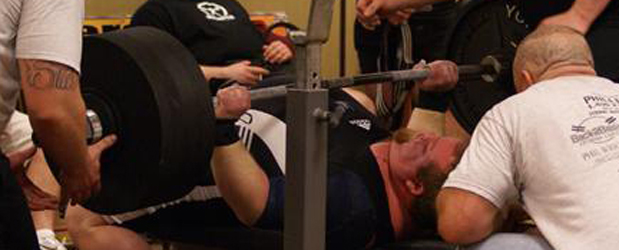
Within the field of collegiate strength & conditioning, Bryan Mann is synonymous with practical application of scientific research. You see, strength & conditioning coaches that are able to sift through the research and differentiate what is of value for their athletes are at the top of the field. Earning his doctorate degree while helping lead the University of Missouri to perennial powers in multiple sports is indicative of his tenacious work-ethic, dedication to his passion, and unwavering integrity when preparing athletes.
I first met Bryan in the Spring of 2005 while at the CSCCa National Conference in Salt Lake City, Utah. As part of an open roundtable discussion, Bryan was able to explain very complicated training methodologies in a very understandable way. The good coaches have a way of doing this. Since then, Coach Mann has been a tremendous resource for me as a strength & conditioning coach. Bryan's knowledge and application of the APRE system has not only helped his teams and athletes achieve their goals, but helped all the teams and athletes of the coaches he has influenced. Dr. Mann has researched, modified, and optimized this system to help lifters and coaches alike.
Excerpt from APRE: The Scientifically Proven Fastest Way to Get Strong by Bryan Mann
Magic of APRE
The magic of the autoregulatory progressive resistance exercise (APRE) protocol lies in its reproducibility. The APRE has adjustment charts that state that if you perform this number of repetitions, you are to increase or decrease a certain amount of weight. This ensures that all coaches are on the same page, gives athletes a goal, and decreases the time spent in workouts.
In an athletic program with multiple coaches working together, using the APRE protocol ensures coordination and uniform adjustments to an athlete’s training program. In facilities with large coaching staffs, opinions vary among coaches regarding weight increases. Some may think that for every repetition over the goal weight, the athlete should increase the weight by 10 lbs while others may think the weight should only increase by 5 lbs per repetition. Through the use of standardized adjustment charts, the APRE allows all coaches to change the weights without introducing inconsistency into the training program. This will help produce homogenous results.
The APRE protocol is useful for encouraging individual goal setting. If athletes learn the adjustment chart, they’ll know how many repetitions are needed for an increase in weight. Thus, they can set goals. For example, if my athletes are using APRE6, they know they need to get thirteen repetitions in order to increase the weight by 15 lbs. They want to get as strong as possible. So, by having a standard protocol, they know what they need to achieve to get there. The APRE protocol encourages intrinsic motivation in athletes.
If the athlete understands the inner workings of the APRE protocol, specifically the adjustment charts, the amount of time required for a workout will decrease. Once an athlete learns and understands the ins and outs of the APRE, coaches won’t need to make as many adjustments in weight for subsequent sets. The athletes will spend less time standing around waiting on the coach and will instead be able to make adjustments on their own. However, it’s best to only allow athletes to make their own adjustments on exercises that are less coaching intensive such as bench presses, inclines, pull-ups, and other similar exercises. Coaches should closely monitor exercises such as the squat or Olympic lifts that require more technique to ensure that proper technique is used. If the athlete is allowed to move up in weight using improper form, the chances for injury increase.
Related Articles
The Individualization of Team Training
What I Learned from Tiger Woods









